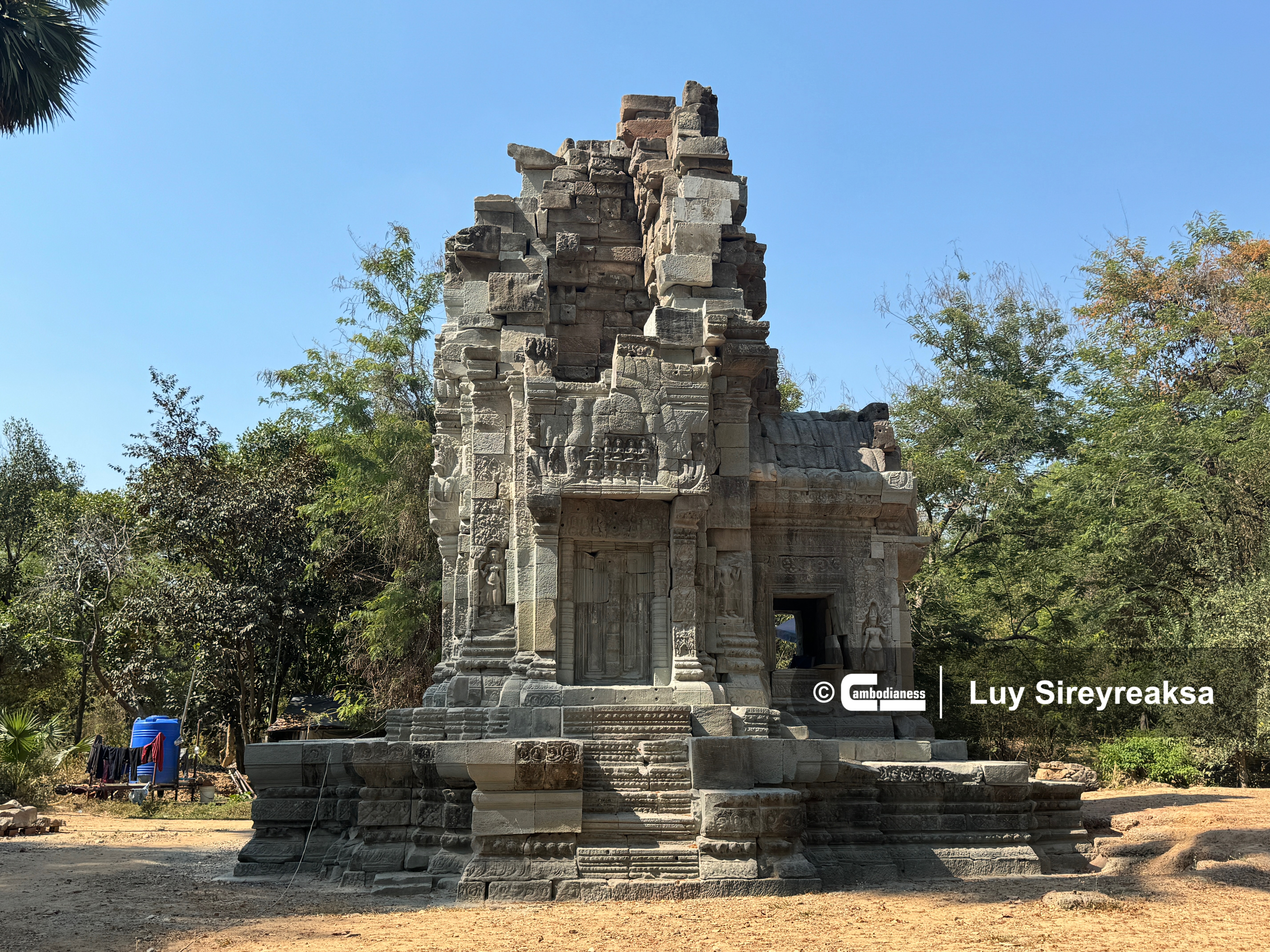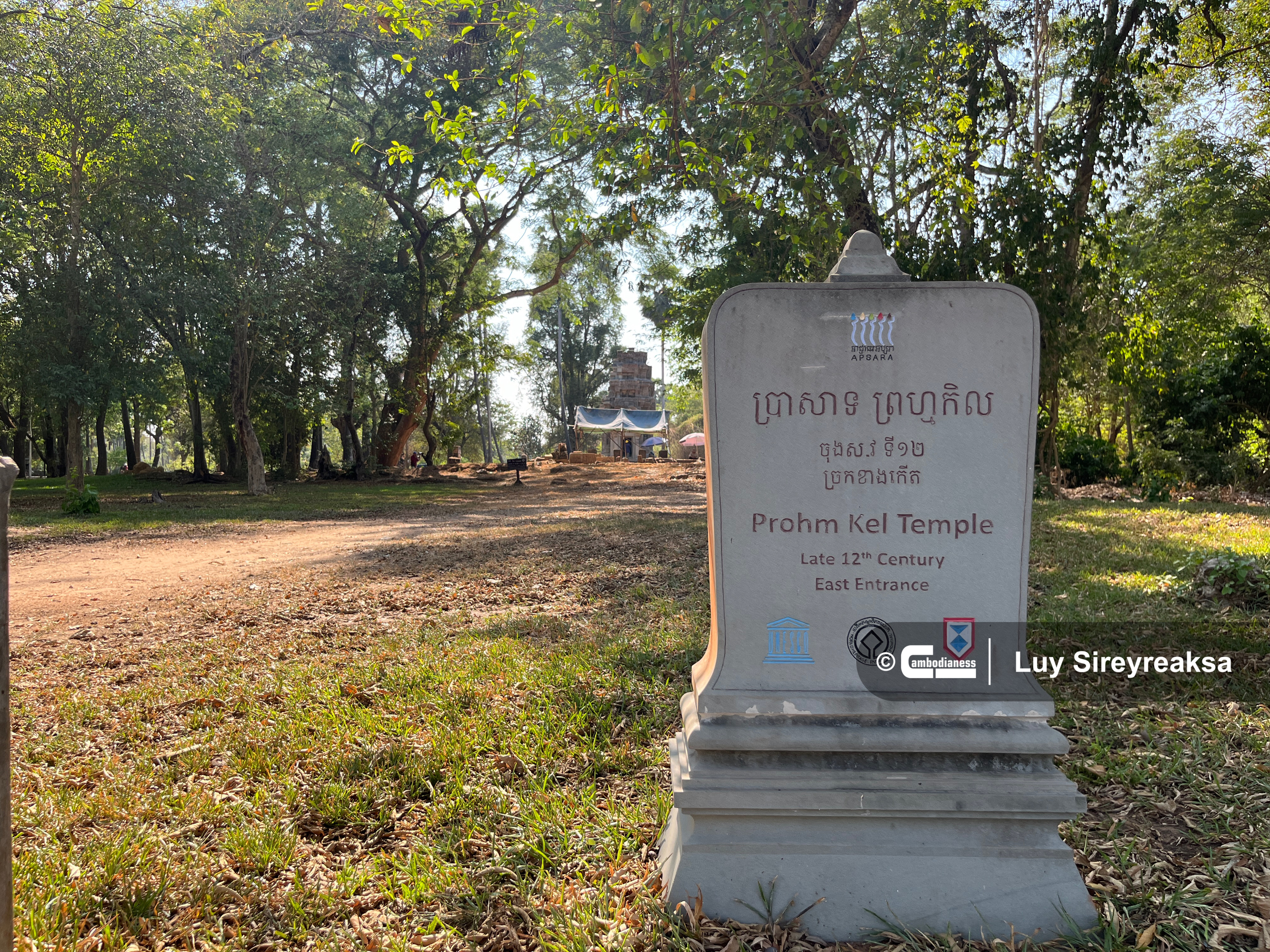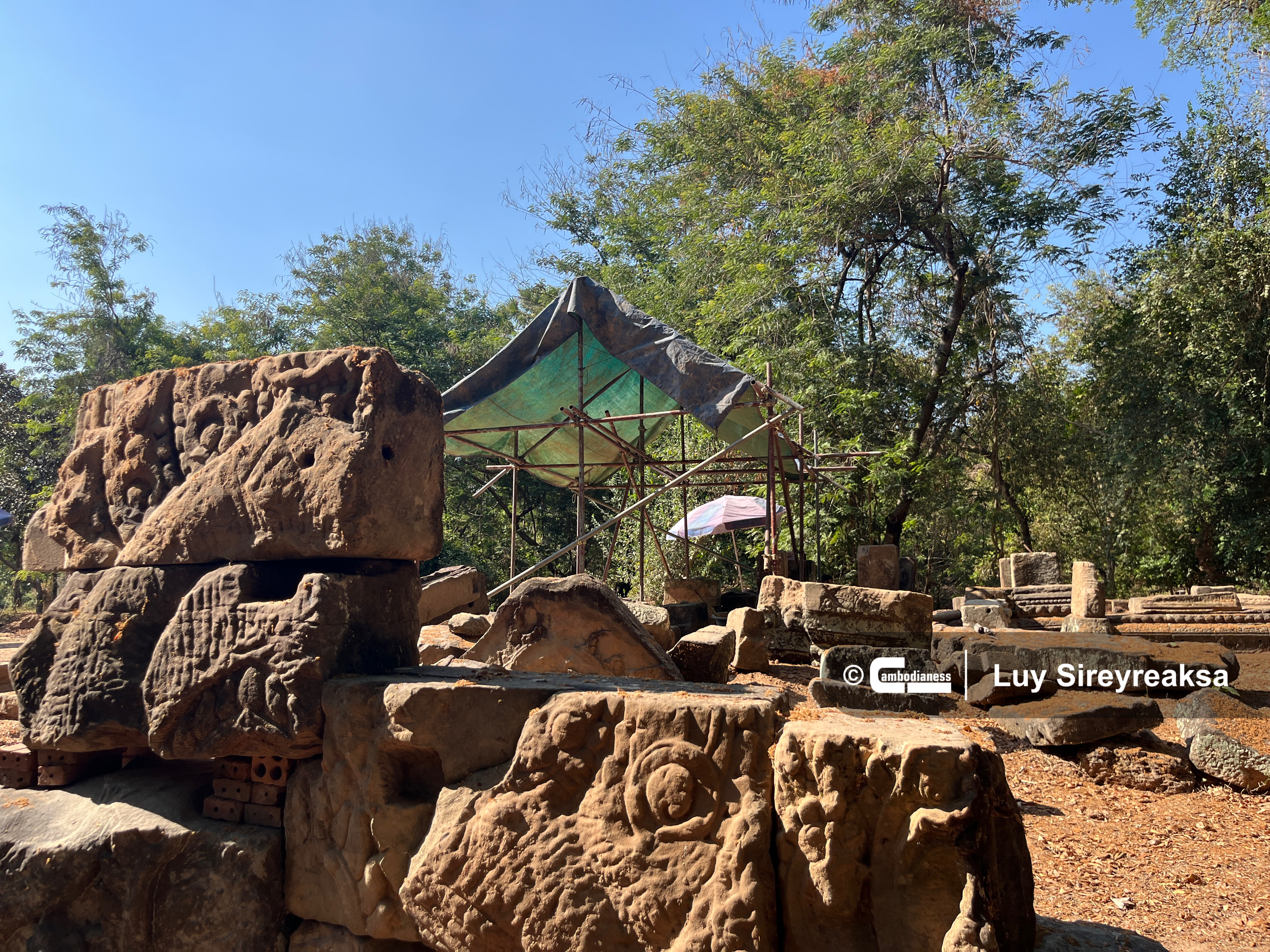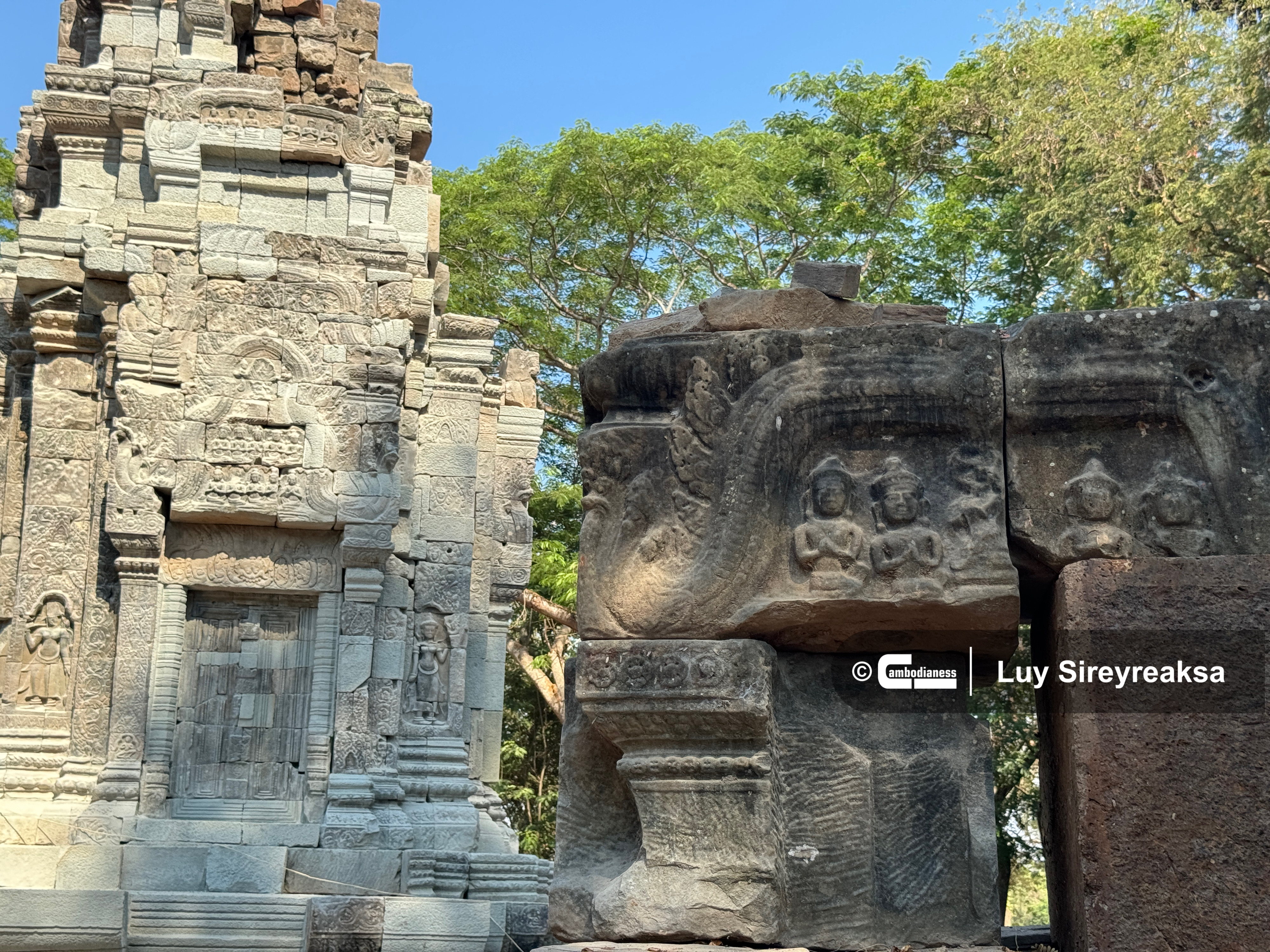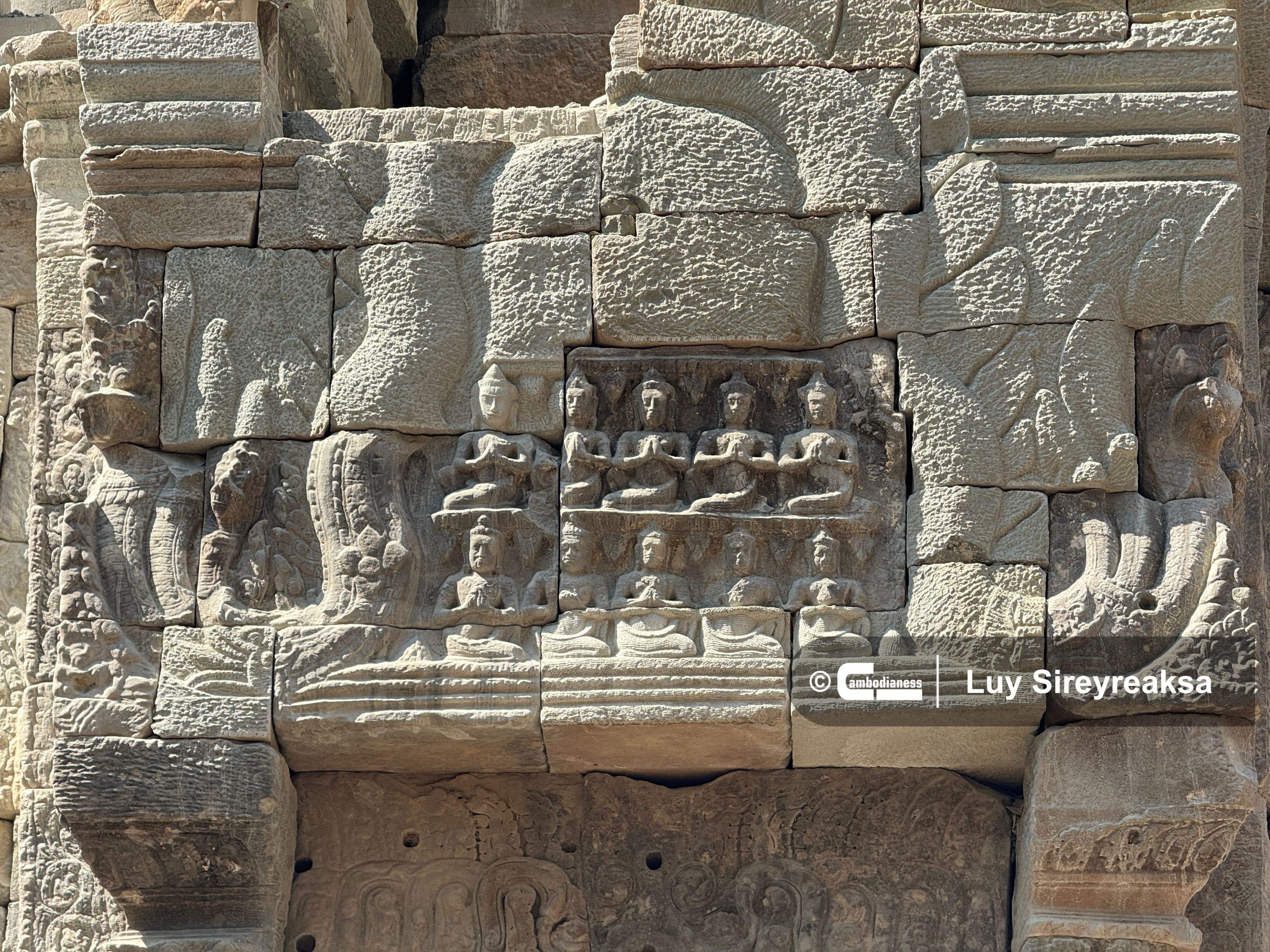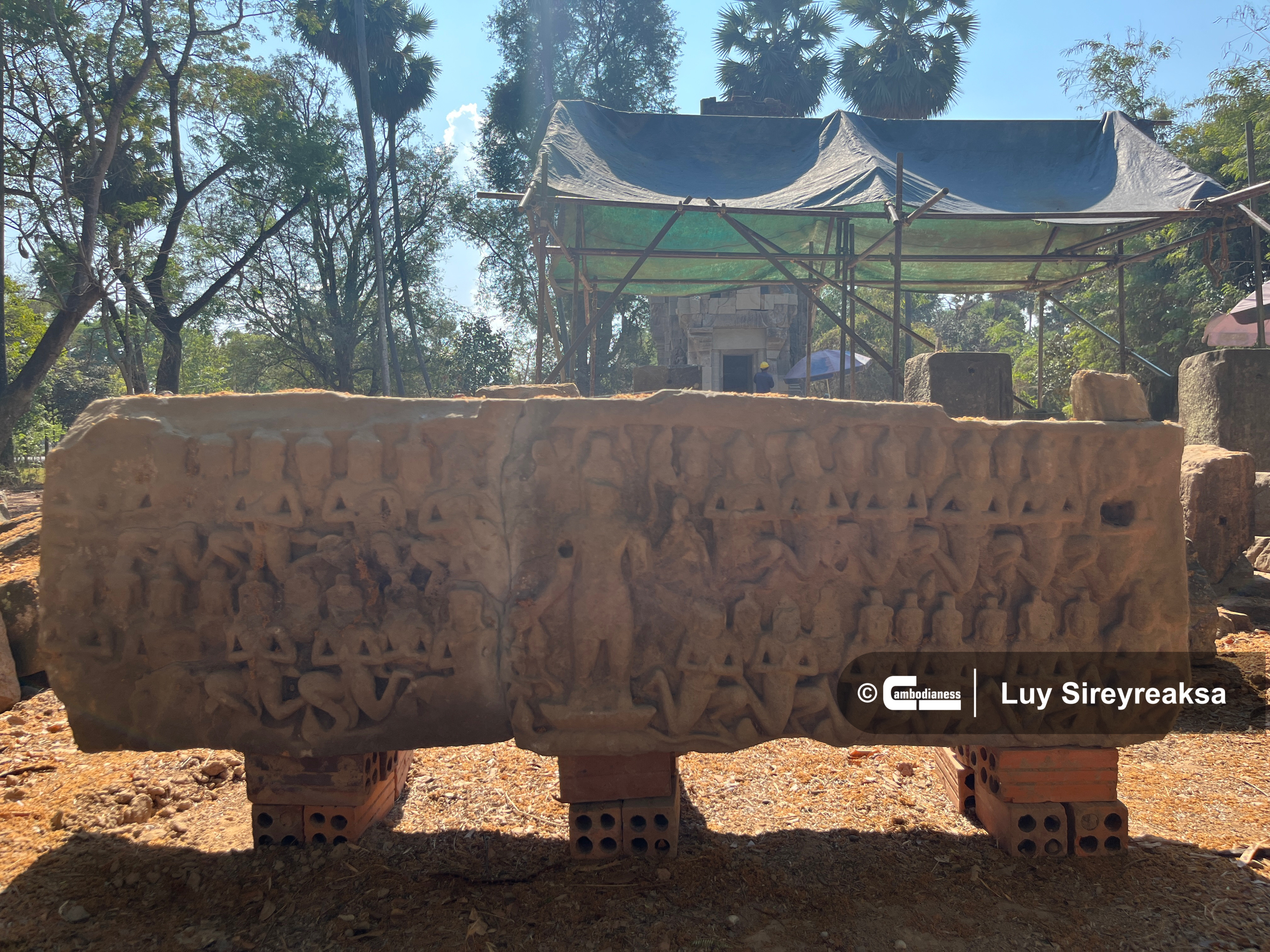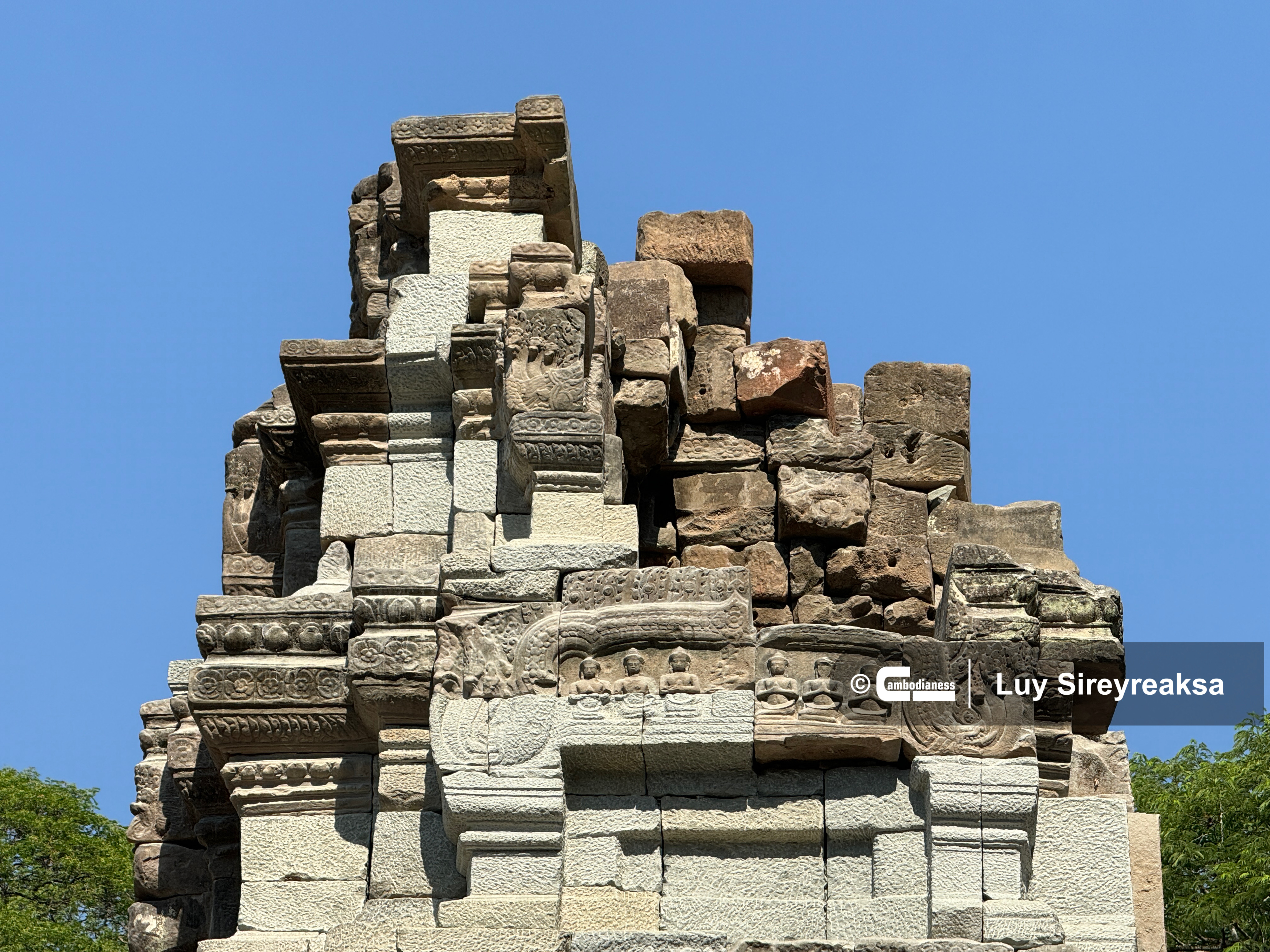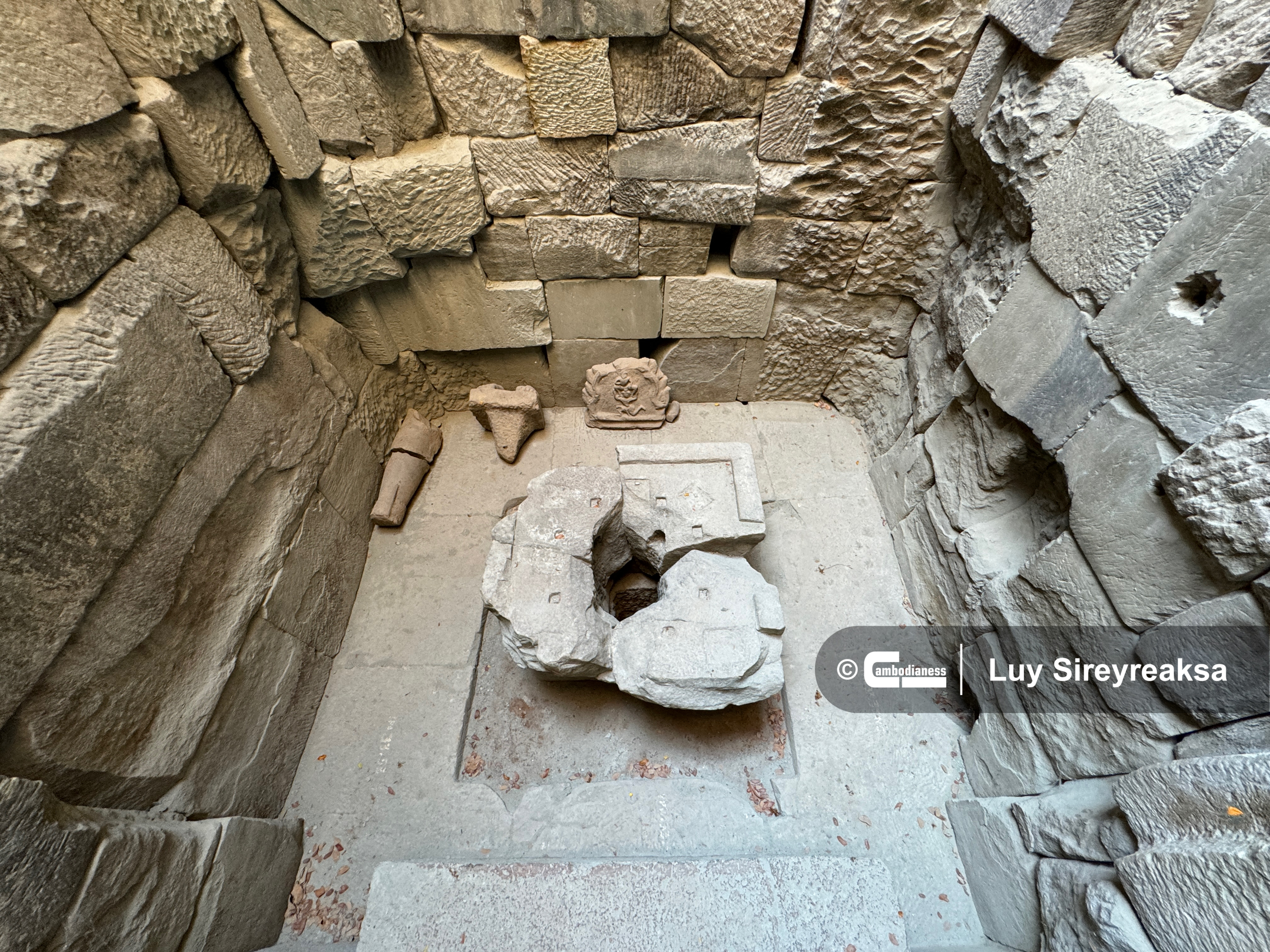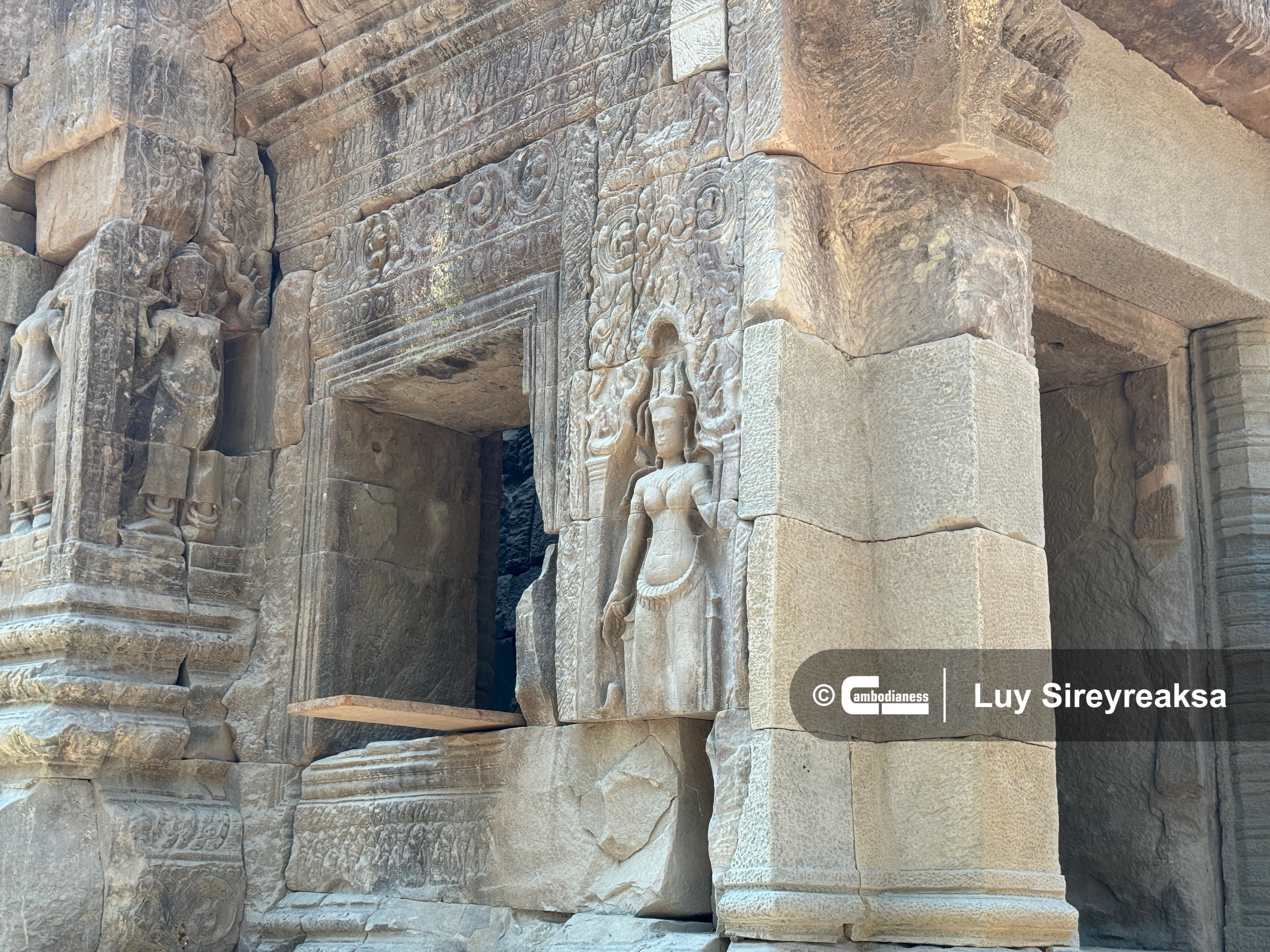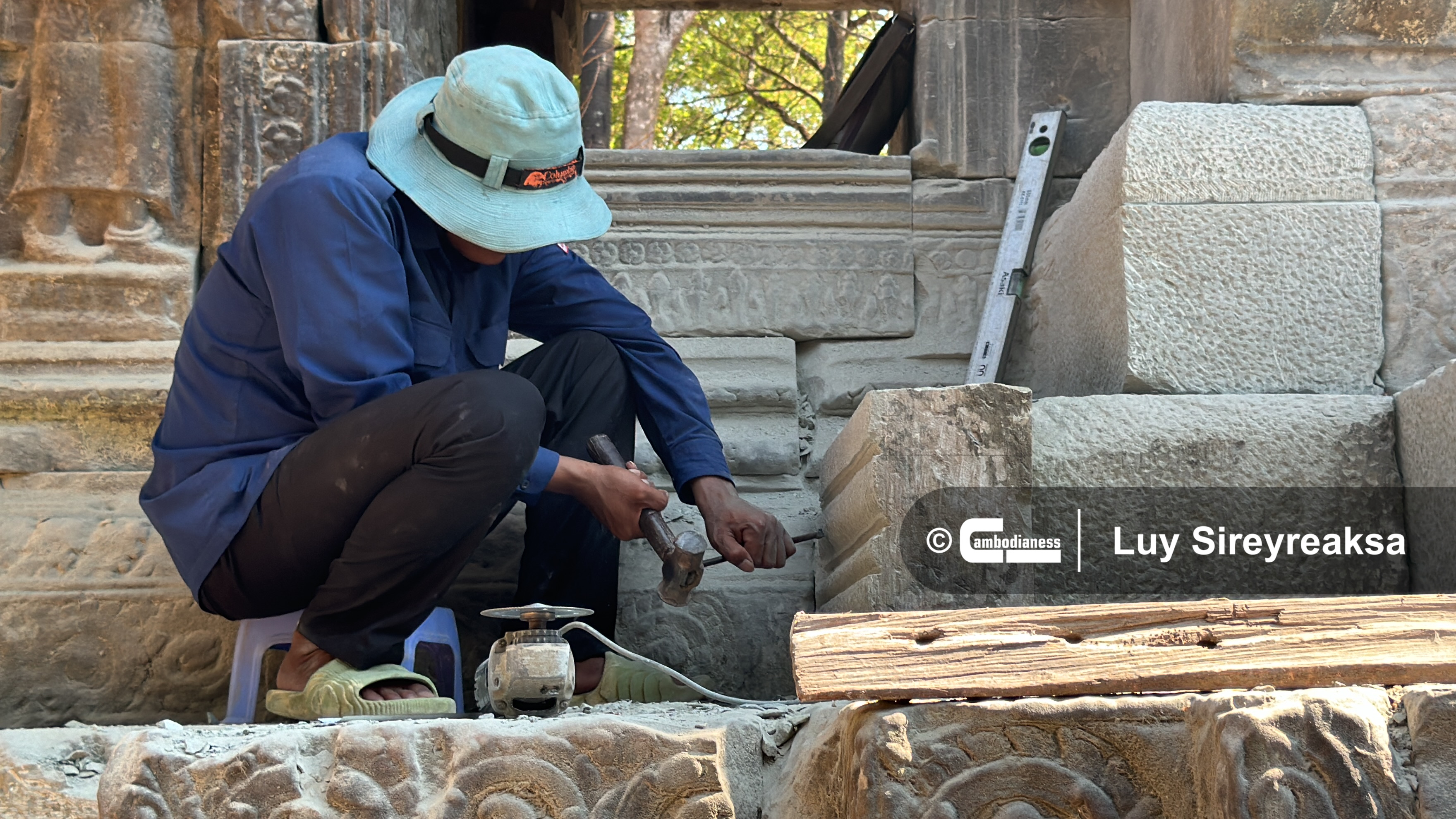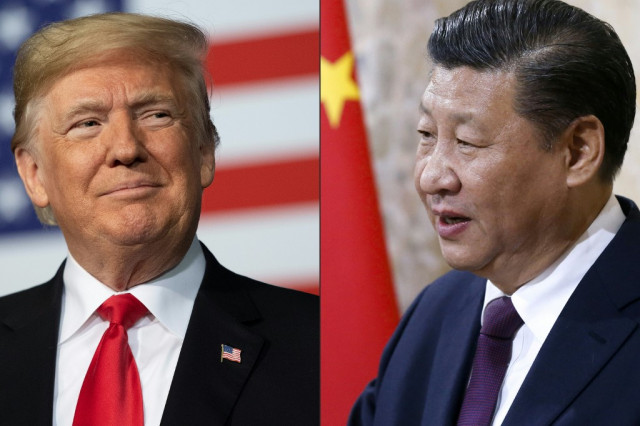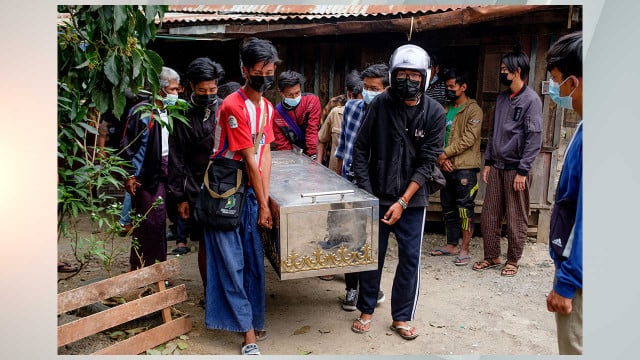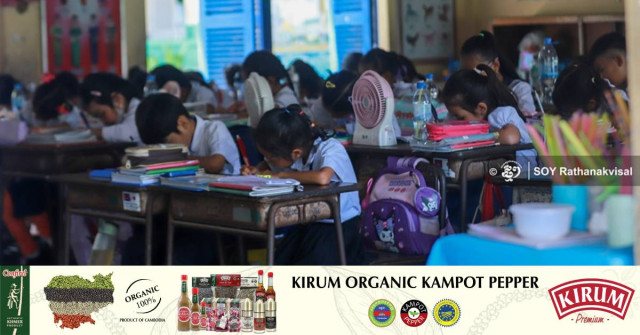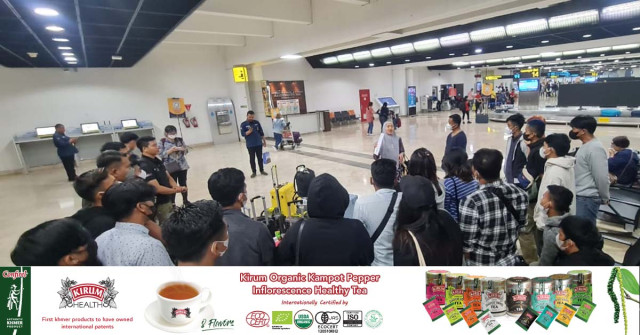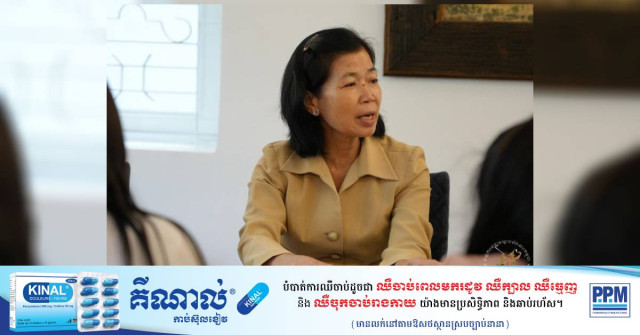Rescuing an Angkorian Hospital: the Restoration of Ta Prohm Kel

- By Sem Vanna
- April 27, 2024 10:30 AM
SIEM REAP — Considered the epitome of medical progress, the hospitals of the Angkorian era have reflected for researchers the extent of the empire.
Built during the reign of King Jayavarman VII who ruled in the late 12th - early 13th centuries, the 102 hospitals known as arogyasala—meaning health and house or enclosed space in Sanskrit—were constructed throughout the kingdom that spread beyond present-day Cambodia’s border to the north. Built with standardized features, they have been fairly easy for archeologists to identify.
Caption: Ta Prohm Kel temple viewed from the south on April 2, 2024.
Situated almost in front of the famed Angkor Wat temple’s causeway bridge on the corner of a road leading to the southern gate of the Angkor Thom walled city, the relatively small building known as Prasat Ta Prohm Kel is indeed one of the 102 hospitals built to care for the ill and injured.
Damaged by nature and also human activity over the centuries, Ta Prohm Kel has been under restoration since March 2023. Today, most of the scaffolding has been removed and only a few specialized workers are working on the new stones, which had to be put in, so they will harmonize with the old ones.
Mao Sokny is an architect with the APSARA National Authority—the Cambodian government agency managing the Angkor Archeological Park. He explained what is believed to have been the function and activities of this hospital a very long time ago.
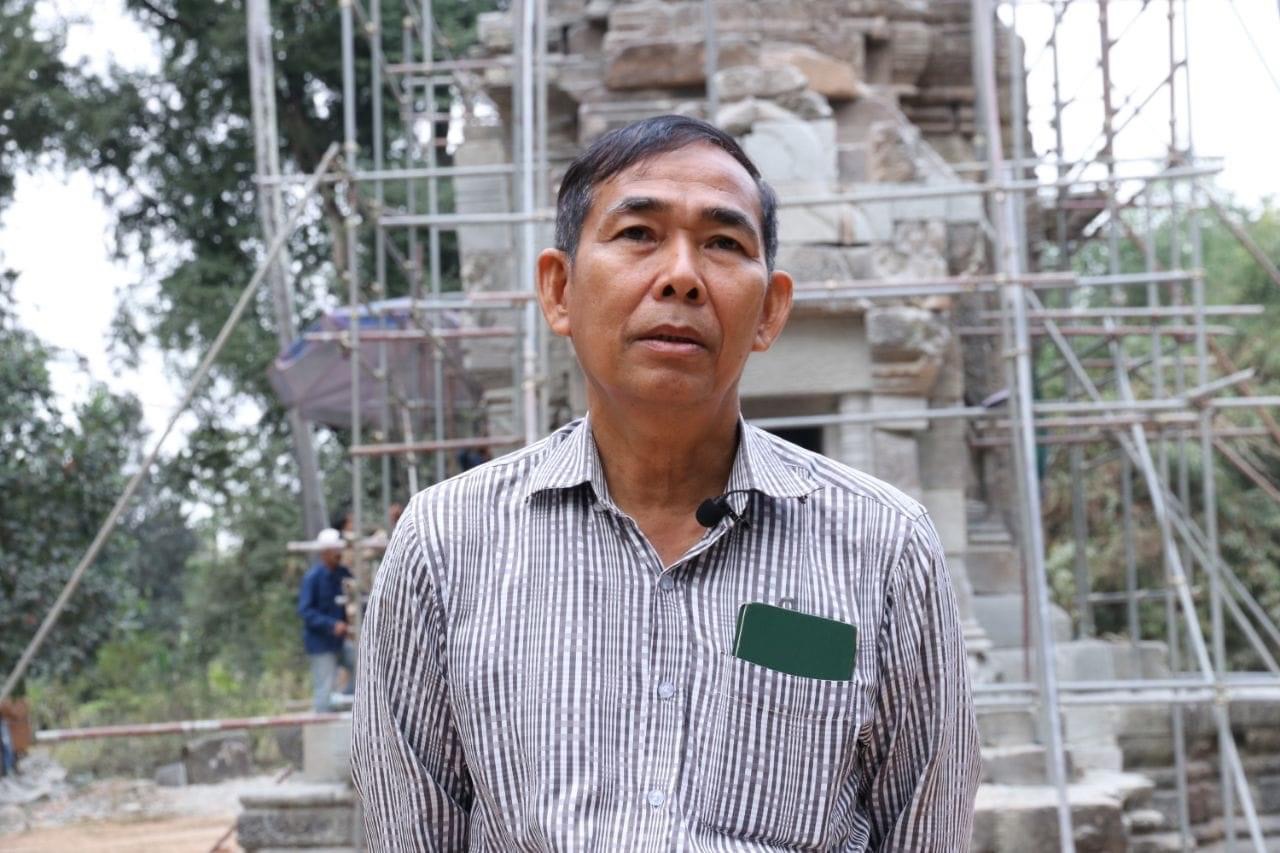
Caption: Mao Sokny, an architect with APSARA’s Department of Conservation of Monuments and Preventive Archaeology. Photo: APSARA
Sem Vanna: Those hospitals were constructed based on the same standardized plan. Would you describe what buildings and features were found at a hospital of King Jayavarman VII?
Caption: Ta Prohm Kel temple viewed from the west on April 2, 2024.
Mao Sokny: Hospitals of the Angkorian period have a distinct configuration consisting of a pond—in this case 20 meters on all four sides—toward the northeast, a library toward the southeast, a central tower connected by a cruciform causeway to the east, and an enclosure wall surrounding the compound. The central tower is considered to be the main spot of sacredness. In addition, a number of small sculptures can be seen associated with the hospitals.
Caption: Pediment of Ta Prohm Kel temple.
In the tower, a pedestal holding sacred figures has a small duct facing north that enables water to flow out of the pedestal. The central tower also has a small water channel connecting the inner chamber and the outside environment toward the pond in the northeast. The pond helps cool the air around the hospital, supply water to the hospital and helps evacuate excess water during heavy rainfalls.
Shelters, most likely made of less permanent materials such as wood and clay, could be constructed around the central tower to host patients and conduct medical assistance.
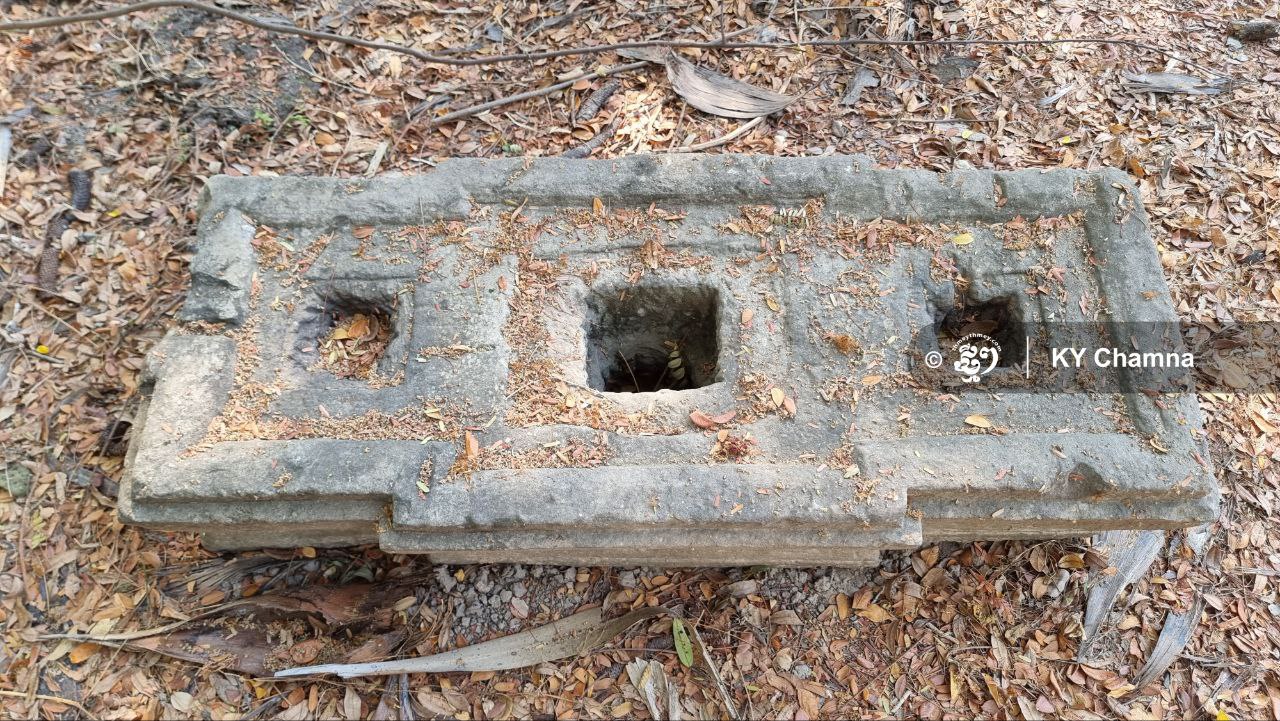
Caption: A stone pedestal that used to hold sacred deities with a duct on the left.
Sem Vanna: Did this hospital go through restoration before this one?
Mao Sokny: Records show that as early as 1920, the École Française d'Extrême-Orient (EFEO) [or French School of Asian Studies] had untangled the vegetation and restored some parts of the hospital using metal and concrete reinforcement. The west and the south sections of the tower were badly damaged. Remnants of tree roots have also showed us that this building was once heavily engulfed by nature as well as affected by human activity such as gun battles or lootings.
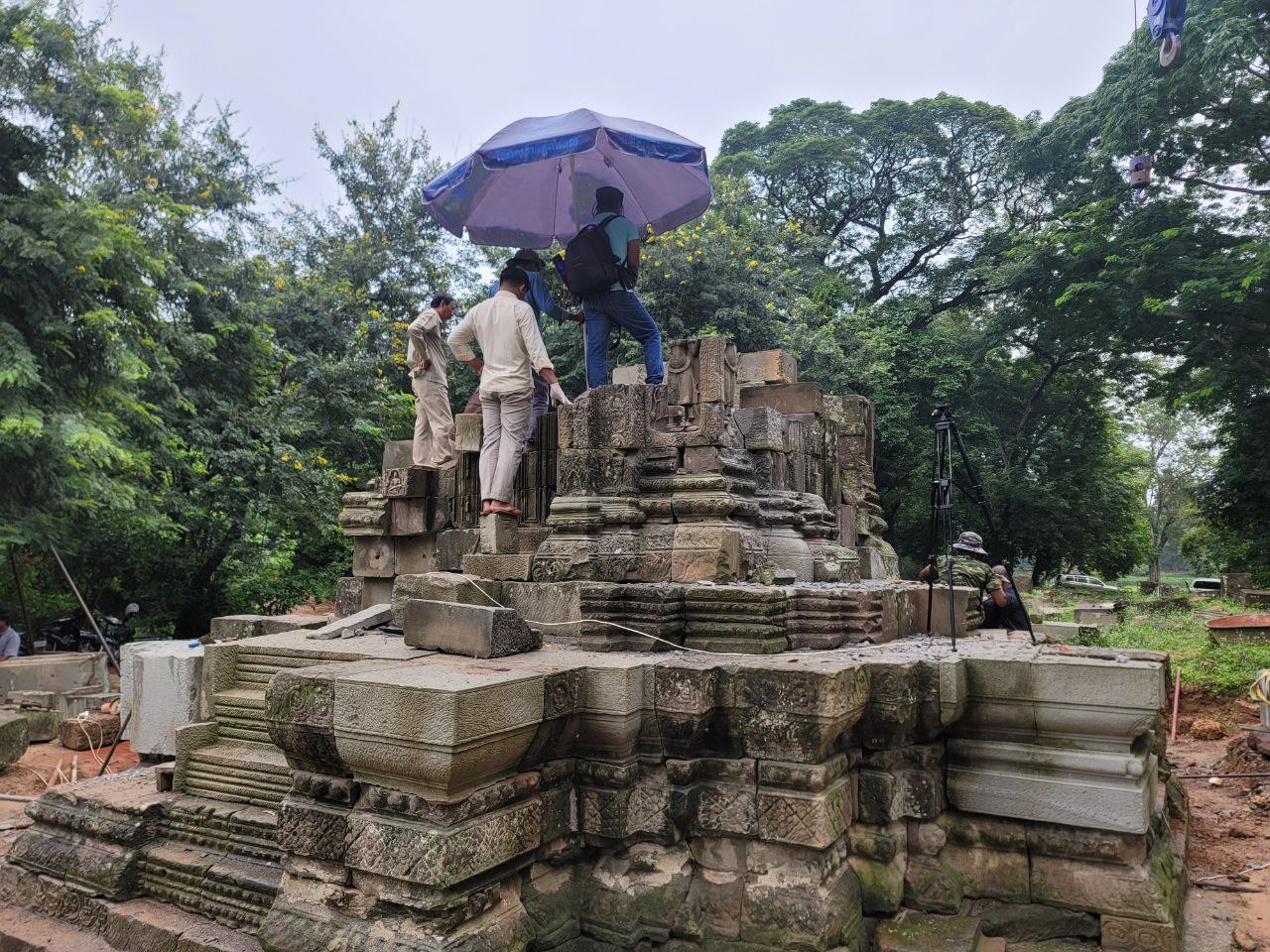
_1714185817.jpg)
Caption: Restoration of Ta Prohm Kel temple in August 2023. Photo: Isa Rohany
During the excavation, we found the head of Bhaisajyaguru Buddha (Buddha of Medicine) as well as a number of simas, religious stone markers that demarcate the boundary of spiritual sites, and quartz crystals.
So far, we have, as much as we can, relocated every possible scattered stone that once made up this temple. However, it does not mean that we can just reuse all of those old stones to rebuild the hospital again.
Sem Vanna: Why isn’t that the case?
Mao Sokny: According to the Angkor Charter, in restoration, the introduction of new stones must be less than 30 percent. At this site, we have already added 15 percent of new stones in order to make the main section of the structure more stable.
However, some parts of the tower’s rooftop still remain un-restored and [sections are] only crudely reassembled and kept on the ground nearby. In order to restore the entire rooftop, we need even more new stones to hold the structure safely together.
Caption: Ta Prohm Kel's lotus rooftop being stationed closeby on April 2, 2024.
This will exceed the 30 percent limit that we discussed earlier to as much as 40 percent in restoration. The new stones and the old stones must be readily and visually easy to differentiate. The new stones have no sculptures on them; they should be left plain looking.
Before the restoration of Prasat Prohm Kel, we have discovered that some of the stones from this building had been moved and reused at a nearby Buddhist structure during the Middle Period (post-Angkorian period from the 15th century to the 19th century). Nevertheless, we cannot disturb what was done during that period. In other words, we cannot bring back the stones from the Buddhist structure. Some stones scattered randomly all around in the vicinity and some other stones simply cannot be found. This temple is still more or less a frequent area of worship for people near and far.
Caption: New stones and old stones supporting each other. New stones have to distinguish themselves by being plain-looking.
- Provisions and Manpower Needed to Run King Jayavarman VII’s Hospitals -
Based on the information board at the Angkor National Museum in Siem Reap city, the largest welfare projects managed and funded by the central authority during the reign of King Jayavarman VII were the establishment of 121 rest houses and 102 hospitals that were built all over the kingdom. For the hospitals, each hospital chapel was built based on set, identical dimensions with the same plan and common features. They were dedicated to Bhaishajyaguru, Buddha of healing, and 798 statues were at these hospitals.
There was an inscription at each hospital, which usually began with an invocation to the Buddha and two Bodhisattvas who have special attributes for healing the sick.
The management, ways of operating, medicines and the hospital supporters were described in the inscriptions. Each hospital had a number of staff members with specific responsibilities. Here are some statistics on these hospitals.
- The approximate quantity of yearly provisions from the central authority -
11,192 tons of rice from 838 villages
2,124 kilograms of sesame
105 kilograms of cardamom
3,402 nutmegs
48,000 febrifuges
1,960 boxes of salve for hemorrhoids
- Employees -
2 doctors (to attend each of the four castes)
3 assistants to the doctors (assisting the doctors)
2 store keepers (distribution of medicine)
2 cooks (in charge of fuel, water and cleaning)
14 nurses (administration work)
2 women (grinding rice)
6 women (to heat water and grind medicine)
2 sacrificers (to prepare offering for the Buddha)
1 astronomer
- List of medicine -
Asafetida, aquatic animals, camphor, cardamom, cinnamon, clarified butter, coriander, cubeb, cumin, aromatic curcuma, fennel, ginger, honey, jujube, mustard seed, myrobalan, nutmeg, oregano, senna, sugar, sesame, sandalwood, turpentine, vetiver, vinegar and more.
Conducted in Khmer for ThmeyThmey Digital Media, this story was translated by Luy Sireyreaksa for Cambodianess.
_____________________________________________________________
Related stories:
Healing the Empire: Angkor’s Chapel Hospitals
Hospitals Under King Jayavarman VII






